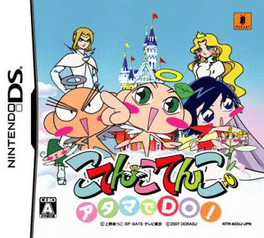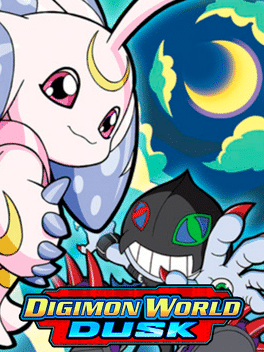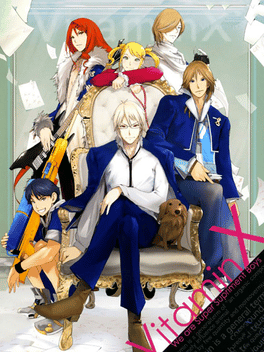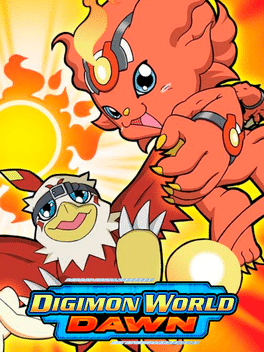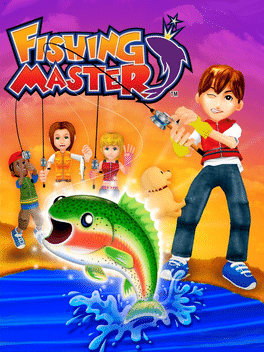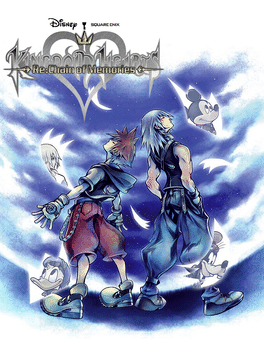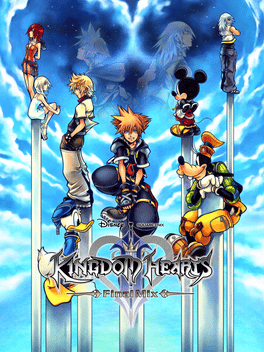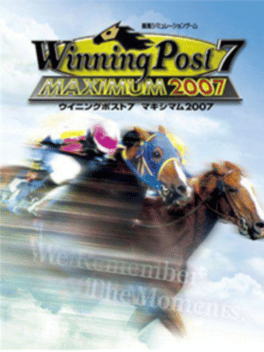New Games - Page 10141
-
Ford Street Racing: XR Edition
2007
The Australian release of Ford Bold Moves Street Racing (EU: Ford Street Racing). The PS2 version replaces some existing cars with Aussie originals, while the PSP version adds these cars in new slots. It is completely identical to the original version, but contains 4 additional cars synonymous with the history of Ford in Australia: the 1970 Ford XY GT Falcon, the 1970 Ford XY GTHO Falcon (Phase III), the 2003 Falcon XR8 Ute and the Australian Falcon XR8. -
The Apartment
2007
The Apartment
2007
The Apartment is a short RPG-Maker horror experience, about Joe Malcom, a resident of an apartment. After he receives books from his neighbour, after her husband commited suicide, strange things start to happen. Perhaps the same books offer an explaination on what is happening. A speciality of the game is, that everything happens in this one room apartment. -
Simple 2000 Series Vol. 115: The Roomshare to Iu Seikatsu
2007
The Roomshare to Iu Seikatsu is a Simulation game, developed by ThinkArts and published by D3Publisher, which was released in Japan in 2007. -
My Melody Angel Book: Denshi Techou & Enjoy Game
2007
My Melody Angel Book: Denshi Techou & Enjoy Game is an Action game, developed and published by TDK Core, which was released in Japan in 2007. -
Shakugan no Shana DS
2007
Shakugan no Shana DS
2007
Shakugan no Shana DS is the Nintendo DS port of the Playstation 2 game. It was released on March 29, 2007. The Nintendo DS version adds onto the PS2 version with the addition of an image gallery that allows the player to see what Shana and Kazumi Yoshida look like in different clothes and a battle mode that lets the player fight against the computer with a character other than Shana. -
Katekyou Hitman Reborn! DS: Shinuki Max! Vongola Carnival!!
2007
Katekyou Hitman Reborn! DS: Shinuki Max! Vongola Carnival!! is a Japanese Nintendo DS game that was released on March 29, 2007. It is based on Akira Amano's manga series, Katekyo Hitman Reborn!. The game includes a variety of minigames that follow scenarios from the anime adaptation. -
Absolute: Blazing Infinity
2007
A Xbox 360 port of Blazing Souls. Absolute: Blazing Infinity a tactical role-playing game developed by Idea Factory. -
Digimon World Dusk
2007
Digimon World Dusk
2007
star 7.8Digimon World Dusk, originally released as Digimon Story Moonlight in Japan, is a Digimon video game for the Nintendo DS handheld game console. It was released in Japan on March 29, 2007 and North America on September 18, 2007. It serves as the second game in the Digimon Story series, though it was marketed as a game within the Digimon World series in North America. -
Vitamin X
2007
-
D.Gray-man: Kami no Shito-tachi
2007
Play as characters from the popular manga and anime. Fight the evil Akuma by using the stylus and touch screen. -
Gakuen Utopia Manabi Straight! Kira-kira Happy Festa!
2007
Gakuen Utopia: Manabi Straight! KiraKira Happy Festa! is an Adventure game, developed and published by Marvelous Entertainment, which was released in Japan in 2007. -
Kingdom Hearts II Final Mix+
2007
star 9.8Kingdom Hearts II Final Mix+ is a Japan-exclusive 2007 combo pack of Kingdom Hearts II Final Mix, the "Final Mix" version of Kingdom Hearts II and Kingdom Hearts Re:Chain of Memories, a remake of Kingdom Hearts: Chain of Memories. Kingdom Hearts II Final Mix features new cutscenes, abilities, weapons, enemies, areas, and a new form, while Kingdom Hearts Re:Chain of Memories features new cards, cutscenes and mini-games. -
Innocent Life: A Futuristic Harvest Moon - Special Edition
2007
The game takes place on the relic-filled Heartflame Island which can be explored by walking or riding on a buggy. Players have the ability to explore the island's ruins and even visit a volcano. All these areas have their own terrain and is said to resemble a tropical paradise but in order to explore all over the island the player must collect jewels and break the seal. -
Sam & Max: Save the World - Episode 5: Reality 2.0
2007
star 8.2With an internet crisis looming and a viral video game holding its players hostage, Sam & Max will need to slip into a new reality to set things right. But can the Freelance Police crack this virtual case in time to avoid worldwide system failure? One of six self-contained cases with an overarching story arc. -
Digimon World Dawn
2007
Digimon World Dawn
2007
star 7.3Digimon World Dawn, originally released as Digimon Story Sunburst in Japan, is a Digimon video game for the Nintendo DS handheld game console. It was released in Japan on March 29, 2007 and North America on September 18, 2007. It serves as the second game in the Digimon Story series, though it was marketed as a game within the Digimon World series in North America. -
Fishing Master
2007
Fishing Master
2007
star 6.1In this game the player uses the Wii Remote to fish. Most of the fish players can catch are real, but there are some fictional fish can be caught as the game progresses. Players can also buy upgrades of their pole and new kinds of bait. Its sequel Fishing Master World Tour was released on January 6, 2009 in North America. -
Kingdom Hearts Re:Chain of Memories
2007
star 7Kingdom Hearts Re:Chain of Memories is a full remake of Kingdom Hearts: Chain of Memories, released on the PlayStation 2. In Japan, it is part of the Kingdom Hearts II Final Mix+ compilation and has connectivity features with Kingdom Hearts II Final Mix. As there were no plans to release Kingdom Hearts II Final Mix internationally, these features were modified for the North American release. -
Kingdom Hearts II Final Mix
2007
star 8.6In September 2006, Square Enix announced Kingdom Hearts II Final Mix, featuring new scenes and gameplay elements. Like the first re-release, this version would combine English audio with Japanese text and also use the "Sanctuary" theme song instead of "Passion". New cutscenes, however, used Japanese voice acting, as they mostly featured Organization XIII members from Kingdom Hearts: Chain of Memories who did not yet have English voice actors; these scenes were later re-dubbed into English for the HD 2.5 Remix release.





